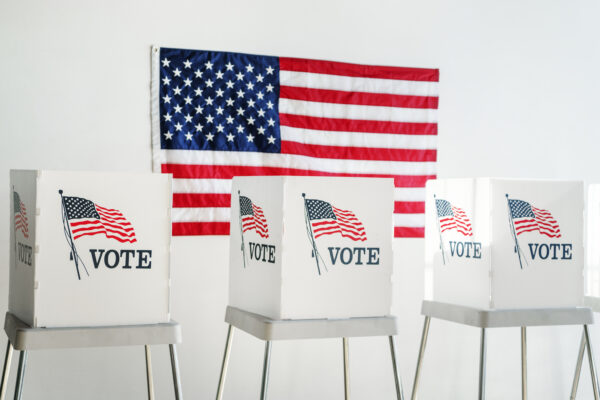
FOR IMMEDIATE RELEASE
March 30, 2020
The Monday Morning Quarterback
A quick analysis of important economic data released over the last week
Dear Clients and Friends,
We hope that you and your families are all well. Like most companies,
we are working from home and continuing to serve our clients. We are open
for business and are happy to discuss any assignments with you, whether by
telephone or by email.
We wanted to assure you our investment in technology is allowing our entire
staff to work seamlessly from home.Our use of our remote capabilities works
extremely well, and we are able to move studies and analyses forward without
delay.
Should you need anything during this time, please reach out to any of the
partners with the knowledge that the service and solutions you are accustomed
to will not change during the current quarantine period. We can be
reached at 480-423-9200 or email.
Stay safe and be well. Thanks for your loyalty over the years. Following is this week’s Monday Morning Quarterback and Elliott Pollack’s latest economic analysis.
Elliott Pollack Rick Merritt Jill Welch Danny Court
The rubber is about to meet the road. Last week, Congress passed and the President signed the most sweeping economic stimulus package in history. The CARES act (Coronavirus Aid, Relief, and Economic Security Act-who thinks of these names?) has an estimated $2+ trillion price tag. (By the way, a trillion is a thousand billion. A billion is a thousand million. And a million is 16 times the median household income in the U.S.) The Act is 800+ pages long which means that probably no member of congress has read it in its entirety. Included are:
- $250 billion to make unemployment insurance available to more workers and to extend the duration of payments from 26 to 39 weeks. Most importantly, it increases weekly benefits by $600 per week for four months. This, plus existing unemployment benefits, will help replace lost income for most of those affected by the mass layoffs as a result of the need to close down the economy to fight against the spread of the COVID-19 virus.
- $301 billion in direct stimulus check payments to households.
- $349 billion in loans to small businesses with the amount spent on payroll, rent and utilities converted to grants that don’t have to be repaid.
- $500 billion in loans, loan guarantees and other aid to businesses, states and municipalities. This includes bailouts for cargo and passenger airlines, businesses deemed critical to national security such as Boeing and funds to backstop losses in lending facilities at the Federal Reserve.
- $32 billion in grants to cover wages at air carriers and their contractors.
- $150 billion in direct aid to states and/or municipalities.
- $340 billion in supplemental spending for hospitals, veterans’ care and public transit.
- $221 billion for a variety of other tax benefits.
Outside of the monetary package, there are other items to increase cash flow for affected households, at least temporarily. An apartment owner can’t evict a renter who doesn’t pay rent due to current events. And Fannie Mae and Freddie Mac have offered up to 12 months of forbearance on mortgage payments of those affected by the virus.
Will all this stimulus work? It depends on how long the economy is shut down for. If a severe shutdown goes on for more than a few more weeks, it’s going to be tougher. Yet, as long as the benefits get to individuals and businesses to pay wages, the harm can be limited for the next four months (relative to no action). There will be psychological damage, but, if Americans have money, when the economy reopens, they will spend it.
All of this begs several questions. I can only go into a few here. For example, what happens in the rest of the world when other countries try to cover the economic losses of COVID-19? Exactly how will all that be financed? And what happens to exports if the rest of the world is slow to recover? And immediate questions surround things like how many small businesses will reopen? There are almost 31 million small businesses (500 employees or less) in the U.S. They employ almost half the job holders in the country and create about 60-65% of new jobs each year. How many Mom and Pop restaurants, bars, retail stores and one-person businesses will not reopen even with the loan guarantees that are really grants?
This is where the rubber meets the road. How can all this money get to small business owners quickly? For small businesses, it will be handled by the Small Business Administration through lenders. While the SBA is a fine organization, it is not built for speed. Speed is what will be required by banks that are not staffed to deal with the volume of applications they are going to have to deal with. In addition, the SBA itself will also find that it is understaffed. There are many other questions about implementation that will soon have to be answered. Hopefully, the glitches that arise, and there will be many, can quickly be resolved.
As we discussed last week, if the wages that individuals lost because of recent layoffs were not replaced, the economy would be devastated and the recovery, when it does take place, would be anemic at best. The stimulus package is attempting to address this issue. Cash to wage earners, either directly from the government or indirectly through their employers, must flow quickly. And the longer the economy is closed, the more difficult it will be when what is left reopens.
The stimulus package is a bold response in attempting to mitigate the extent of the economic damage that has been and will continue to be done by the fallout from the virus. Yes, there are lots of perverse incentives. There will be unintended consequences. Much, perhaps too much, has not been thoroughly thought out. But it still appears to be a significant step forward.
As for this week’s data, most is still B.C. (Before Coronavirus) and, therefore, really doesn’t tell us much about the current economy. The data does suggest that the pre-coronavirus economy was strong.
There was some data that was reported after the virus became a major factor. Initial claims for unemployment insurance skyrocketed to levels that would have been unimaginable B.C. This is true for both national and local numbers. There is no context for these numbers. But, they will get worse, probably much worse, in the next few weeks. Also, not surprisingly, consumer confidence plummeted. That is also likely to get worse.
The only good news here is that, as I mentioned last week, those who still have jobs should see cash pile up as they, as of now, can only spend at grocery store and on the internet. And now many of those who were laid off or had to cut back because their customers are not ordering will be bailed out. If the economy opens up soon, even if it does so only for those under the age of 50 or 60, the damage should be manageable.
U.S. Snapshot A.D. (After
Detection):
- Initial claims for unemployment insurance skyrocketed from 211,000 the week of March 7 to 282,000 the week of March 14 to 3,283,000 the week of March 21. Wow!! The estimate was 1.5 million. That really doesn’t mean much, though. It is likely to go much higher next week.
- The University of Michigan Consumer Sentiment index dropped 11.9 index points in March to 89.1. That’s down from 101.0 in February and 98.4 a year ago. It is likely to get worse next month. The longer the economy is closed down, the more likely declines in sentiment will be.
U.S. Snapshot B.C. (Before Coronavirus):
A quick summary of what now is not so meaningful information is that in February:
- Personal income was up 4.0% (a strong number)
- Disposable personal income was up at the same rate
- Durable goods orders were up 1.2% in February
- New home sales were 4.4% below January numbers but were up 14.3% from year earlier levels.
Arizona Snapshot B.C. (Should be D.M.M.N for Doesn’t Mean Much Now):
- Total non-farm employment continued to expand in February. Year over year, employment grew by 2.7% or 79,000 jobs. All sectors were up with Educational and Health Services, Professional and Business Services, Trade, Transportation and Utilities and Construction leading the way.
- Greater Phoenix employment in February was up 3.2% from year earlier levels. That’s growth of 69,800 jobs.
- Greater Tucson had job growth of 1.3% when compared to a year ago in February. That’s growth of 5,100 jobs.
- Statewide retail sales were up 7.9% year over year in January. In Maricopa County, retail sales were up 8.7%. Things were hot.
About EDPCo
Elliott D. Pollack & Company (EDPCo) offers a broad range of economic and real estate consulting services backed by one of the most comprehensive databases found in the nation. This information makes it possible for the firm to conduct economic forecasting, develop economic impact studies and prepare demographic analyses and forecasts. Econometric modeling and economic development analysis and planning are also part of our capabilities. EDPCo staff includes professionals with backgrounds in economics, urban planning, financial analysis, real estate development and government. These professionals serve a broad client base of both public and private sector entities that range from school districts and utility companies to law firms and real estate developers.
For more information, contact –
Elliott D. Pollack & company
7505 East Sixth Avenue,
Suite 100
Scottsdale, Arizona
85251
480-423-9200











